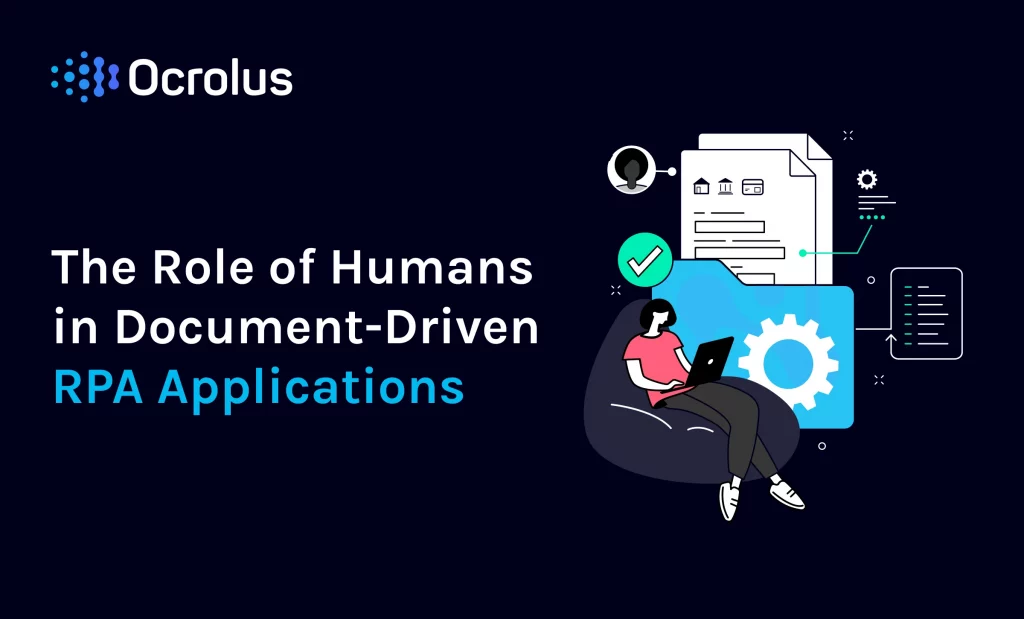This website uses cookies so that we can provide you with the best user experience possible. Cookie information is stored in your browser and performs functions such as recognising you when you return to our website and helping our team to understand which sections of the website you find most interesting and useful.
Attended vs Unattended RPAs: The Role of Humans in Document-Driven RPA Applications

Robotic Process Automation (RPA) is one of the fastest-growing enterprise software segments, having expanded 31% to $2.4 billion in 2021, and with predictions to top $2.9 billion by the end of 2022. Everywhere from the boardroom to online newsrooms, people are discussing RPA’s potential to replace slow, error-prone manual processes with truly automated workflows.
Certainly, RPA has empowered companies to accomplish more with fewer manual steps and human involvement. However, it is a misconception to conclude that RPA is a complete substitute for people. Today, 57 % of RPA workflows fall into the category of attended automation, according to Automation Anywhere. The proliferation of attended automation is a testament to the importance of human judgment in optimized business workflows.
Attended vs. Unattended RPA: What’s the difference?
RPA bots fall into two primary categories: attended and unattended. Unattended RPA bots can fully automate tasks without human intervention, executing straightforward processes that have minimal exceptions. Attended RPA, on the other hand, works alongside humans, typically in workflows that are less deterministic and require variable decisioning. What both RPA types have in common is the goal of accelerating repeatable components through an RPA workflow.
The distinction between attended vs. unattended RPA takes on particular importance when it comes to document-initiated processes. By their nature, RPA documentation tends to be unstructured or semi-structured content vessels (the exception being templated forms.) Document-initiated processes include loan applications, insurance claims, and purchasing or procurement transactions. It becomes evident that document-driven processes lend themselves to attended automation because from the onset, a human is entering information via a document. Engaging a bot with a document involves at least three steps:
- digitize the document;
- extract the desired content; and,
- validate that the data is accurate.
These three core steps (and often several more sub-processes) have been the purview of the legacy capture industry. For example, a typical invoice onboarding sequence is scanning, document classification, OCR, data lookups, and manual review. While document capture ISVs reference variations on natural language processing (NLP), machine learning (ML), and Artificial Intelligence (AI), what they all have in common is the inability to extract highly accurate data, creating the need for manual review at the end of the document onboarding process. Manual review–even within a feedback loop–is counterintuitive to attended RPA, which has an implied goal of reducing the queues that fragment the RPA workflow and limit the benefits of frictionless automation.
A new model for document automation has been adopted from the Fintech industry and is beginning to displace legacy document capture in RPA applications. Human-in-the-loop machine learning is a model that acknowledges the benefit of human involvement at multiple points in the onboarding process, not just post-process review.
Human-in-the-loop machine learning can be thought of as attended machine learning applied to unstructured content. The model employs predictive modeling and valuation metrics with a defined feedback loop based on human supervision. This model produces continuously better results and is a drastic improvement over static machine learning or post-process correction. This is the model that Ocrolus created for identifying document types, data fields, and the actual data, which learns from human input, increasing its ability to recognize similar content in ensuing documents.
H2: The Human-in-the-Loop Model Applied to& RPA Applications
Here are some examples of how the human-in-the-loop model is applied to RPA:
Insurance Claims
Insurance carriers are constantly receiving claims, and bots offer a solution for an efficient RPA workflow, which includes processing property and casualty claims. Where claims are received in a structured form, e.g., covered customers filling out a claim form on the carrier’s website, unattended bots are appropriate. The majority of claims will be processed automatically, with exceptions redirected to human review in RPA-attended workflows. The distinction here is that unattended bots can make automated determinations without supervision by humans. But when the claim gets moved into an exception flow for human review, attended bots will help the process.
Attended automation is used where there is feedback between humans and machines. For example, after the initial inspection in an insurance exceptions flow, an agent might feed claims to a bot that would collect different data points surrounding each claim. The RPA bot would automatically validate and automate claims that fit the status quo and return unusual claims to an agent for another level of review. Forward-thinking companies apply feedback in the form of training data for machine learning models in order to optimize for speed and accuracy.
Procure-to-Pay
Accounts Payable is an essential back-office function in every business, and it almost always involves the structuring of a large number of invoices. For over two decades, legacy document capture companies have attempted and largely failed to achieve unattended automation in Accounts Payable. The issue of structuring data from invoices, often considered the “holy grail” of document-based data extraction, remains an onerous process that requires human-in-the-loop attention.
The Growing Hybrid RPA model
While unattended automation has delivered tremendous value and spearheaded the growth of RPA applications as a whole, it is only part of the larger value proposition. Many business processes require human intelligence. Attended RPA fulfills these requirements by offering a workflow to empower rather than replace humans, automating the rote components of core processes. With attended automation, human workers can focus their efforts on intelligent tasks, bots can automate repetitive labor, and companies can boost productivity, improve data quality, and reduce transaction costs.
Contact us to learn more about RPA applications and how Ocrolus can help by speaking with one of our automation experts.






